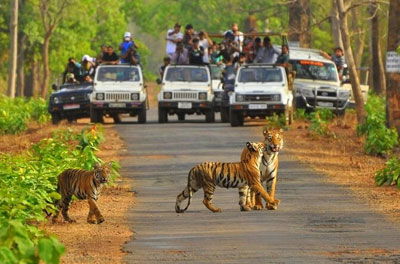Sariska National Park

Area : 800 sq. km ( with a core area of 498 sq km).
Established : 1958 as a sanctuary, 1979 as a tiger reserve, 1982 as a national park.
Sariska National ParkSariska National Park lies in the Aravalli hills and is the former hunting preserve of the Maharaja of Alwar. Sariska itself is a wide valley with two large plateaus and is dotted with places of historical and religious interest, including the ruins of the Kankwari Fort, the 10th century Neelkanth temples, the Budha Hanumab Temple near Pandupol, the Bharthari Temple near the park office, and the hot and cold springs of Taalvriksh. The large Siliserh Lake is at the north-eastern corner. The forests are dry deciduous, with trees of Dhak, Acacia, Ber and Salar. The Tigers of Sariska are largely nocturnal and are not as easily seen as those of Ranthambhor. The park also has good populations of Nilgai, Sambar and Chital. In the evenings, Indian Porcupine, Striped Hyaena, Indian Palm Civet and even Leopard are sometimes seen. The forests are lush during and immediately following the monsoon, but during the dry months of February May there is a shortage of water and in consequence mammals are attracted to water holes. At this time of year visibility is good because of the sparse foliage. Sariska is excellent for birdwatching and has an unusually large population of Indian Peafowl.



